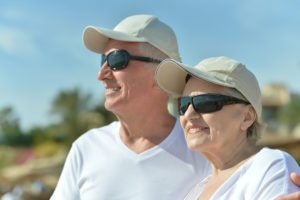
“For thinner or fatter” … marriage seems to lead to weight gain.
Sociologists and public health experts have long known that couples influence each other’s health. Over time, couples tend to share habits. They might encourage each other to be healthy—or, influence each other to adopt patterns that are not so beneficial for physical and emotional health. In a sense, it’s important to treat the couple when one member is suffering from, for example, depression or a chronic illness.
Researchers from the University of Basel in Switzerland recently revealed another area in which couples should be cautious. The research team wanted to find out if being married (or cohabiting as a couple) made it more or less likely that a person would maintain a healthy weight.
The research team looked at data on 10,226 couples across Europe. They asked the couples about their body mass index (BMI) and their eating and exercise habits. The results: on average, couples had a higher BMI than singles. This held true for both men and women, and across socioeconomic status, age and nationality.
Body mass index (BMI) is a measure of body fat based on height and weight. The World Health Organization says that a normal BMI is between 18.5 and 25; overweight is defined as between 25 and 30; and obesity is above 30. The University of Basel researchers found that the single men in the study averaged a BMI of 25.7, while the married men weighed in at 26.3; the single women averaged 25.1 and the married women at 25.6. Ralph Hertwig, Director of the Center for Adaptive Rationality at the Max Planck Institute for Human Development in Berlin, calls the differences “meaningful.” These aren’t huge amounts, but enough to alert us to creeping weight gain.
What accounts for this effect? Is it the stereotypical belief that once people are married, they “let themselves go”? It would seem that exercise is the key. The study’s lead author, Assistant Professor of Health Psychology Jutta Mata, noted that couples actually tend to buy healthier foods—“more regional and unprocessed products and less convenience food.” But perhaps they are eating too much. And the married people, especially the men, didn’t get as much exercise as the single folks.
According to Hertwig, “Our findings show how social factors can impact health. In this case, that the institution of marriage and certain changes in behavior within that context are directly related to nutrition and body weight.”
So couples should continue to cook healthy meals together, while being more mindful of the amount they eat. And rather than snuggling on the couch all evening, go out for a walk. Getting enough exercise makes it more likely that you’ll still fit in your wedding dresses and tuxes on your first anniversary and beyond.
(A note about BMI: Some experts caution that the BMI doesn’t reveal the most accurate picture of whether a person is at their ideal weight; for example, if the couple are body builders, they may weigh in at a higher-than-recommended BMI because muscle is heavier than fat. It’s important to talk to your doctor about maintaining a weight that’s right for your body type.)
Source: IlluminAge AgeWise reporting on a study from University of Basel.





